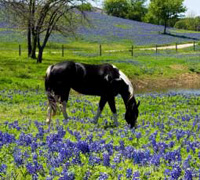 Keeping your equine partner “healthy as a horse” is a worthy objective that can be achieved with some thoughtful strategies and collaboration with your veterinarian. A springtime tune-up is key in preparing your horse for the active riding season ahead. It can also protect him against illnesses that become more prevalent with warmer weather and during contact with other horses at events.
Keeping your equine partner “healthy as a horse” is a worthy objective that can be achieved with some thoughtful strategies and collaboration with your veterinarian. A springtime tune-up is key in preparing your horse for the active riding season ahead. It can also protect him against illnesses that become more prevalent with warmer weather and during contact with other horses at events.
Routine vaccinations are a great tool for managing horses’ health needs. In our increasingly more mobile equine lifestyle, it is important to protect your horse against any illnesses he might be exposed to at shows or lessons, and bolster his immune system to cope with the stress of travel and competition.
Preventative Care
Recommended vaccines vary based on geographic region, horse’s age, horsekeeping situation, and risk of exposure to disease. Talk to your vet about which vaccines your horse needs.
Immunizations should be administered prior to the highest risk of exposure. If your horse is being vaccinated against a pathogen for the first time, the two- or three-dose initial series should be completed two weeks prior to the period when he will be at greatest risk of exposure to that pathogen so that his body has time to build up an effective immune response. Your horse will then need a vaccine booster at least two weeks prior to expected exposure each year thereafter. In addition, a horse that is frequently exposed to travel or groups of horses should receive boosters for respiratory viral vaccines in both spring and fall.
Immunizations against mosquito-borne viruses, such as encephalitis or West Nile virus, should be given just prior to mosquito season in your area. In most parts of the country, this will coincide with your veterinarian’s annual spring visit.
An annual tetanus toxoid vaccine is also usually given at the time of your veterinarian’s spring visit. Even the smallest puncture has the potential to create tetanus, a gruesome neurological sickness that is often fatal, though not contagious.
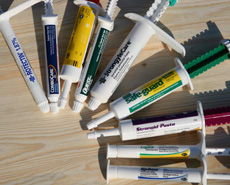 You’ll need to deworm your horse on a regular basis throughout the year. Most deworming programs require the administration of a paste dewormer every six to eight weeks. The annual spring tune-up session gives you an opportunity to confer with your vet about any changes to make with regards to various dewormers and an appropriate schedule for using them. Your veterinarian may suggest specific recommendations that are tailored to your region or your individual farm. At this time, he or she may also submit a sample of your horse’s manure to a lab to check for the presence of internal parasite eggs. This simple screening test monitors the effectiveness of your parasite control program.
You’ll need to deworm your horse on a regular basis throughout the year. Most deworming programs require the administration of a paste dewormer every six to eight weeks. The annual spring tune-up session gives you an opportunity to confer with your vet about any changes to make with regards to various dewormers and an appropriate schedule for using them. Your veterinarian may suggest specific recommendations that are tailored to your region or your individual farm. At this time, he or she may also submit a sample of your horse’s manure to a lab to check for the presence of internal parasite eggs. This simple screening test monitors the effectiveness of your parasite control program.
Keep accurate records of your vaccination and deworming schedules to make sure they are in accordance with your vet’s advice.
You’ll also want to set up your horse’s annual dental exam around the time of your vet’s spring visit. If your horse is sedated for dental procedures, this may be a good time to clean his sheath, or in the case of a mare, the area around her udder. Have the vet examine for any abnormalities, such as indications of skin cancer.
Healthy Farm Management
Some diseases can be protected against through vaccination, but farm management has a large role in minimizing risk. Equine encephalitis viruses (Eastern and Western) and West Nile virus are transmitted by mosquitoes, and as mentioned, prevention relies on annual immunization against these viruses, following an initial primary series of two injections. (In states bordering Mexico, it may also be appropriate to vaccinate against Venezuelan encephalitis.)
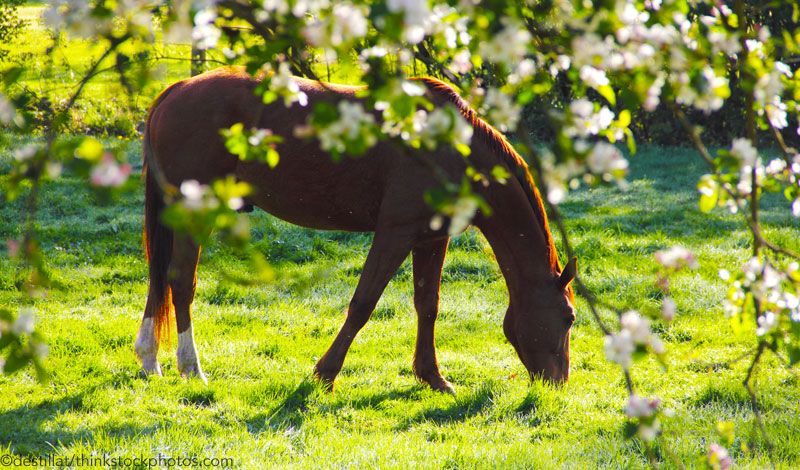
It’s also important to recognize that viral-transmitting mosquitoes have preferred breeding sites. Farm management can have a significant impact on reducing your horse’s potential exposure. Read more on Insect Control Strategies.
Fitness
With the warm weather and longer days of spring, you’ll find more time to be back in the saddle. Discuss your intended training strategy and goals with your vet for some guidance on how to develop your horse’s fitness for his intended discipline. Ask your vet to watch your horse move out, either on a lead line, longe line or under saddle, to check for subtle lameness issues that might need to be addressed.
Now that you are ready to ride, you’ll want to steadily develop your horse’s fitness and strength. Before you hop in the saddle and take off on a lengthy adventure, you’ll have to do your homework and leg him up. Start his re-conditioning program with short sessions of walking, gradually increasing the duration and then adding some hills. Before and after each ride, check his legs for any newly developed bumps or swellings. Once you’ve done at least two weeks (four to five days a week) of slow exercise, you can raise the bar by adding in some trot work or steeper hill walks, or by increasing the length of your rides. As you ask your horse to go back to work after winter idle time, each change in demand should be gradual — with each incremental increase in saddle time or exercise demand, it is best to increase these individually, adding in a longer duration or a little more intensity, but not both at the same time.
After about four to six weeks of careful training, your horse should be ready for more demanding work — trotting, cantering and skill-training in your selected sport. Once he goes back into work that is hard enough to break a sweat, don’t forget to give him ample warm-up and cool-down time before and after exercise. By slowly and steadily bringing your horse back to condition, you will avoid unnecessary vet bills caused by injury to his musculoskeletal system.
A Healthy Environment
Common sense dictates that to keep horses at their best in terms of health and performance, it is important to develop an environment that supports the cause. Examine your horse’s living arrangements and find ways to reduce stress if he lives in a herd. Any stressor can depress a horse’s immune system. Stress occurs from a variety of influences — crowding and disruption of established social groups, as well as inclement weather, inadequate nutrition, lengthy transport, weaning, parasite infestation or illness. In addition to stress reduction, herd compatibility minimizes fighting and the risk of injury.
Outdoor living lets your horse breathe clean air that is not as polluted with the particulates, dust and mold that can accumulate inside a barn. Provide a run-in shed as shelter against adverse weather conditions, and check that all buildings and fences are in good condition. If living outdoors isn’t an option, daily turnout is important for mental health as well as the positive effects it has on improving circulation and muscle tone. Put compatible horses together, both in turnout fields and adjacent paddocks and stalls.
Feed Program
The spring tune-up visit is also a good time for your vet to review the details of your feeding program to ensure that your horse stays at an optimal weight — neither too thin nor too fat. Maintaining your horse at a good body-condition score and a strong level of fitness can head off future health problems and help him perform at his best.
Feed high-quality hay to maximize your horse’s health and immune system. Horse feed that is contaminated with a decomposing animal — such as a rodent, rabbit or bird — can be a source for botulism, a neurological disease that can infect one or many horses in a herd, although it is not contagious. When hay is baled, animals are sometimes inadvertently caught up in the baler. Decomposing plant matter is another possible source of the disease, which is particularly a problem in round bales that are left outside for storage or consumption. Botulism flourishes in any environment that favors mold growth, whether in baled hay, grain, silage or storage containers. Besides vaccination in high-risk areas, careful monitoring of your horse’s feed is essential for the prevention of botulism.
All these tune-up strategies will help create a healthy environment and optimize your horse’s condition, so as you get out and about to equestrian events he will arrive in good health. Protecting your horse is easy to do and fairly inexpensive considering the costs and time involved with nursing a sick horse back to health.



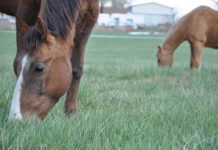

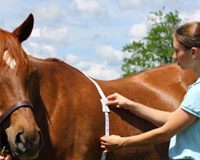

Interesting! I hope that everyone has a great and safe Easter! That goes for last year and all the other years that I’ve missed.
Excellent advice.